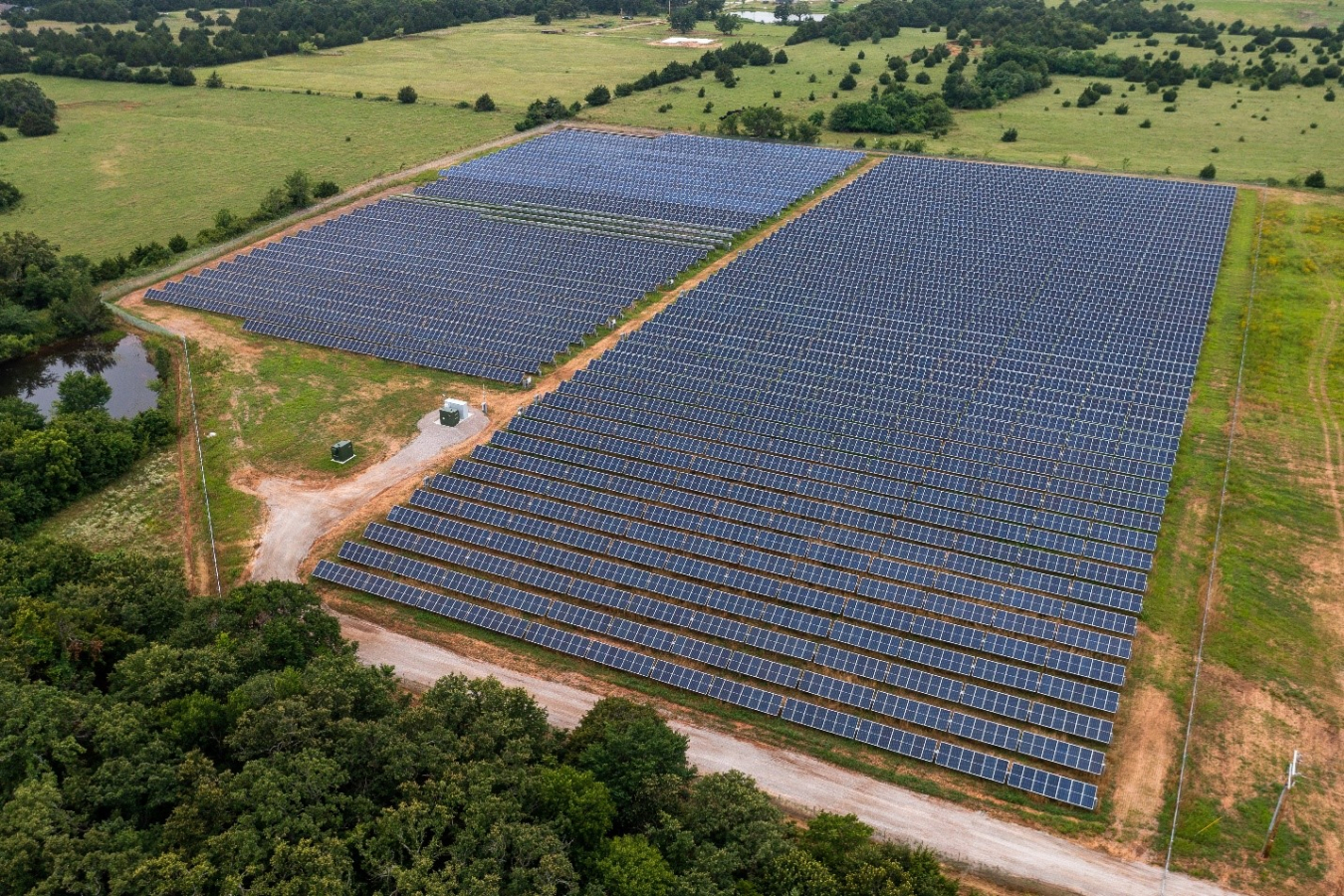
A community solar array in Norman, Oklahoma benefits residents and helps students learn about solar energy.
A little exposure to solar energy can go a long way in building community support for solar projects. It’s a lesson recently learned by the Oklahoma Electric Cooperative (OEC), a member of the U.S. Department of Energy’s National Community Solar Partnership. The central Oklahoma electric utility was invited to participate in a solar pilot initiative in 2015, which built a plant next to a highly-trafficked interstate.
Interest in more resilient energy sources has been growing in Oklahoma, where extreme weather events like lightning storms, tornadoes, and earthquakes are common. The state was also impacted by 2021’s ‘Big Freeze’ that notoriously left millions of people without power, highlighting concerns over how energy is created and distributed. But this new, highly-visible solar array took interest to the next level.
“I started getting a lot of calls about the site from community members, especially teachers,” says Nick Shumaker, OEC’s head engineer and manager of the cooperative’s renewable energy portfolio. “It felt like they were starving for exposure to renewables.”
Nick started giving tours of the site to teachers and their students. He also developed an hour-long presentation about energy, transmission, and how renewables fit into the picture, and ultimately partnered with OEC’s community engagement team to develop more materials to tell the story of the site.
Interest in the program kept growing. Nick and his colleagues began to wonder—what if they developed an educational solar site on purpose? He posed this question to a few teachers who had toured the site. They pointed him toward a piece of land owned by one of OEC’s customers, Norman Public Schools.
As it turned out, the school district was having similar conversations. Earlier that year, teachers had gone on strike over low wages and the district was scrutinizing its budget. Building maintenance and energy costs represented nearly 80% of the annual budget, making them prime contenders for cost-cutting strategies. The district had considered adding solar to its properties, but was deterred by the steep up-front costs and complex regulations on distributed solar. In making a connection with Nick, though, the district realized a partnership with OEC could generate revenue for the school, provide education for students, and help develop a community solar model—a win, win, win.
Nick and the rest of the OEC team worked closely with Norman Public Schools to develop a 2-megawatt solar project, which went online in December of 2020. OEC took on the financial risk and planning responsibilities for the project but guaranteed revenue for the installation through a 30-year lease. The project provided additional benefits during the ‘Big Freeze’ of February 2021, generating energy through the storm and helping OEC keep energy prices low.
Now, OEC and teachers are leveraging community interest to discuss how to set up future community solar projects and develop more educational resources for students, including exploring a partnership with Oklahoma University and a local technical school that would involve students in building the projects.
With no up-front costs or maintenance responsibilities, the most common question Nick receives is, “Why wouldn’t we do this?” OEC is currently exploring several models for a community solar project, including a traditional model where subscribers receive bill credits, a model where project revenue funds scholarships for students, and other community-driven options. Regardless, Nick knows there will be no shortage of subscribers.
The Norman Public Schools solar installation was made possible in part by the National Rural Electric Cooperative Association’s (NRECA’s) Achieving Cooperative Community Equitable Solar Sources (ACCESS) project, which is funded by the U.S. Department of Energy’s Solar Energy Technologies Office (SETO). The Norman Public Schools solar installation is the first project to receive technical assistance through the ACCESS initiative. The NRECA has been a member of the NCSP since 2021.